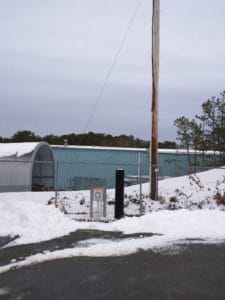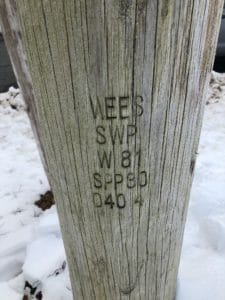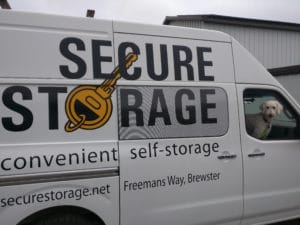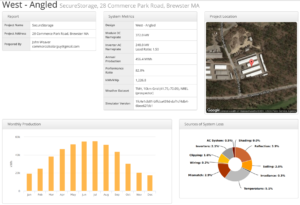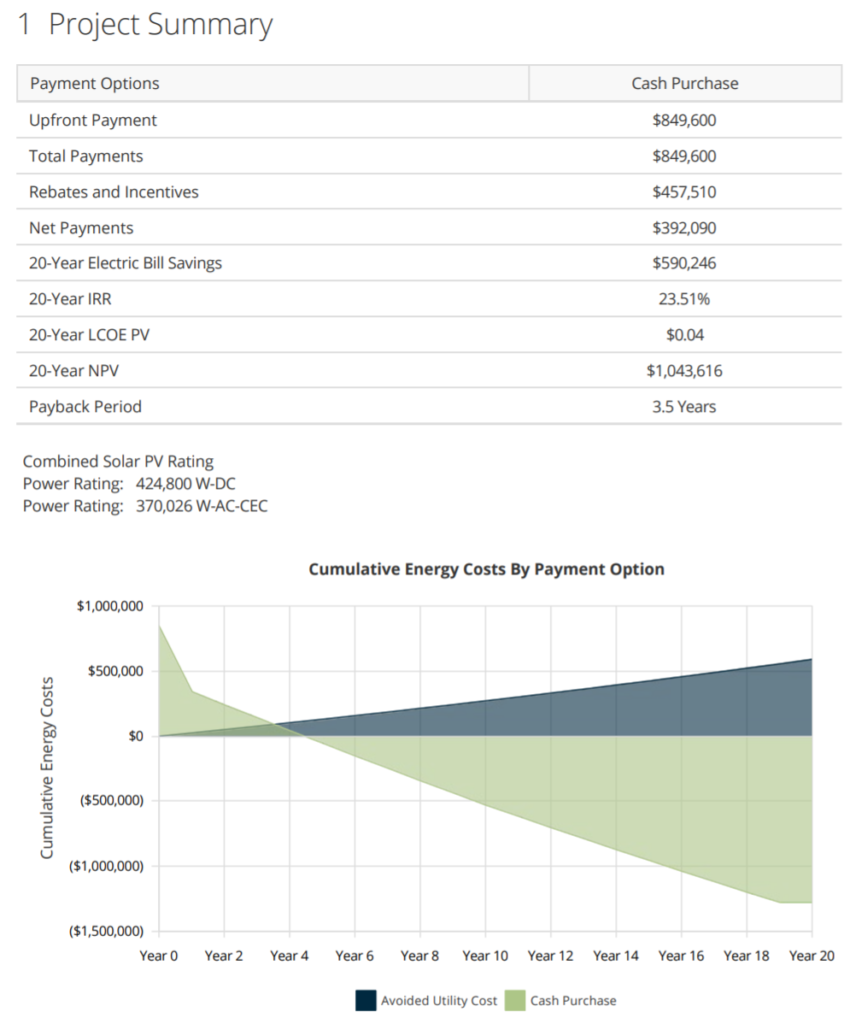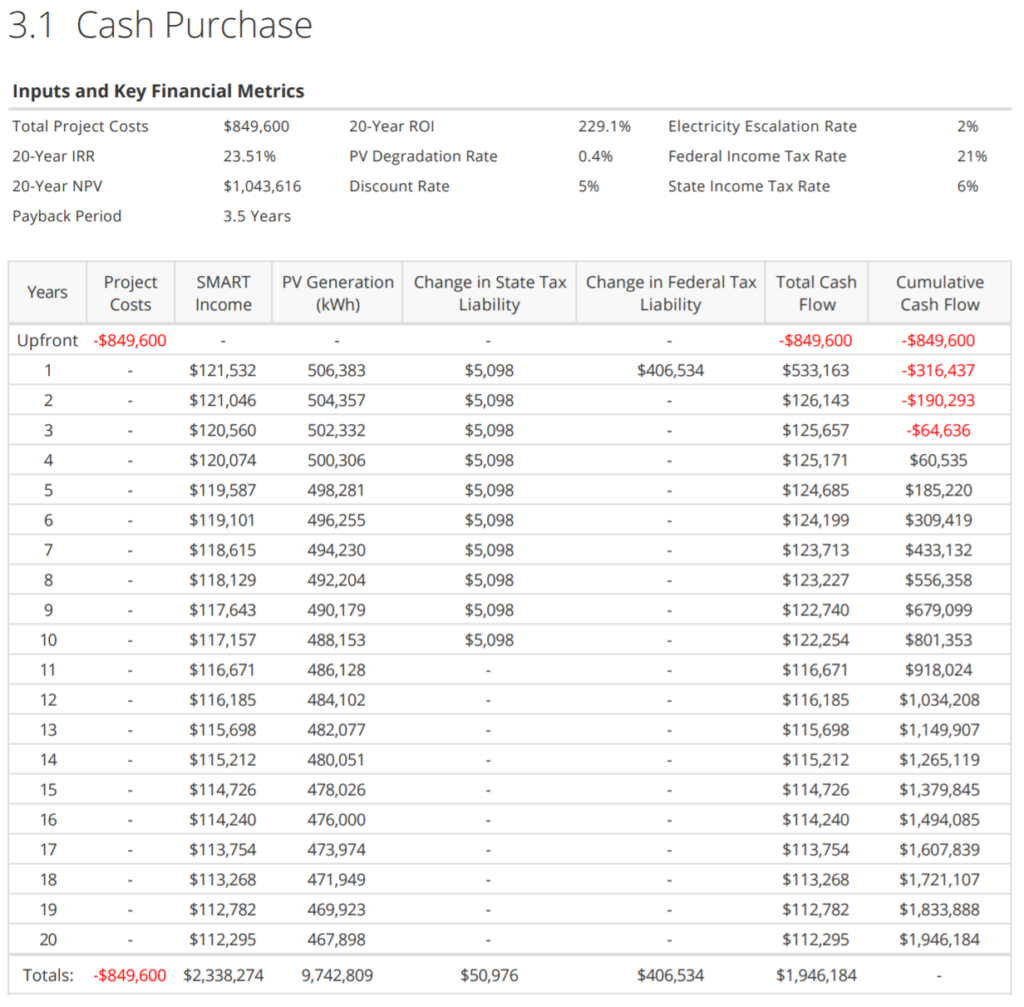Step 1 – Feasibility Analysis: Solar power on self storage in Massachusetts
For this project, first we do a feasibility analysis in this article, then we move onto a deeper financial and power grid analysis, before we show how we actually install the system.
Installing solar panels for commercial buildings is a complex process, but the work pays off. Commercial Solar Guy helped Secure Storage install 2,006 solar panels on top of their self storage location in Brewster, Massachusetts. When Seamus – the owner of the company – reached out, they were looking to better understand the cost of a system, the incentives, and how much they would save. As part of the Massachusetts SMART program – we knew that they’d get a 20 year contract with the utility to buy their electricity at a fixed price. Commercial Solar Guy offered peace of mind as we developed the project from an idea to a final installation.
Secure Storage installed a small solar system back in 2009, and were very happy with it. Now they wanted a system large enough to make use of their whole structure – tens of thousands of square rooftop that they weren’t gaining anything from.
Site Visit
First, back in the fall-winter of 2017, assuming no zoning issues and structural integrity, we visited the site to take pictures of the electrical infrastructure (powerlines, electric meters) and create our first design. We talked about how much solar power might fit on the roof, the 30% federal tax credit and the incentives from the Massachusetts SMART program.
- Utility Meters and snow
- Pole Numbers matter
- Secure Storage & Doggo
Feasibility Analysis
Lots of work goes on in between the original hand shaking and the beginning of construction. One of the first things we do is roughly figure out what the customer can actually build, and then what that build might generate in terms of revenue – this is called the feasibility analysis. The tools that I use for this are Helioscope and Energy Toolbase.
“How much solar can I build? How much electricity will it generate?”
Those are the answers that Helioscope gives us. We use this tool when, ‘We want to see 95% of what will happen in the end” – Benjie Borra, Solar Design Engineer at Commercial Solar Guy.
We’re given information, below images, such as where we can lay the solar modules, how many total solar modules, the amount of electricity that would be produced per month and annually, where our system losses would be and a bunch more. Linked here (pdf) is one of the earliest designs we did for the site – note the December 2017 date. And while there were some refinements, for instance the structure was much flatter, we pulled back on the DC:AC ratio a bit, and used different inverters and modules, we were pretty close in the electricity production numbers that drive the economic argument.
- Design Layout – what might we build
- Feasibility Analysis – Helioscope system layout
“What’s my payback?”
Gonna be honest with you here, while most everyone I ever talk to wants to care for the environment, everyone cares about the financial argument a bit more. There’s a lot of research that says regular people really like the idea of solar power as well – some because of the independence and freedom you gain, others because of the security, and of course those who want to support clean electricity generation. But with that – the majority of people looking at solar panels for commercial buildings want to know how much money will solar power save them.
And that’s why we use a tool like Energy Toolbase (below) or a Microsoft Excel spreadsheet – because we need to clearly communicate the financial information. And while this isn’t the original document the customer was given for privacy reasons, it’s close to the averages we see these days in the market. In this high level description (left image) you see project costs, tax benefits and incentives, payback periods, and a visual representation of cash flow over time. This is the basis of the information that your bank will want to see.
- Feasibility Analysis – Energy Toolbase
- Feasibility Analysis – Cash Flow – Energy Toolbase
Cash Flow & Revenue
In the cash flow on the right Energy Toolbase goes into individual revenue streams on an annual basis. You get to really see the meat – how much Massachusetts pays for the electricity, state and federal tax liability (accelerated depreciation and the 30% federal tax credit for solar power), and the total and cumulative cash flows.
That far right column there – around where the numbers turn from the red to the black – that right there is where million dollar decisions are made.
By combining Helioscope and Energy Toolbase, Commercial Solar Guy combines the skills of an experienced project developer and an almost 20 year Civil Engineer, to show in hard numbers what solar power can do for you.
Make sure to read Part 2 – Solar Tax Credits and Benefits, then check out the images of this project being installed.

Self storage located in Brewster, Massachusetts with solar power in the SMART program.

